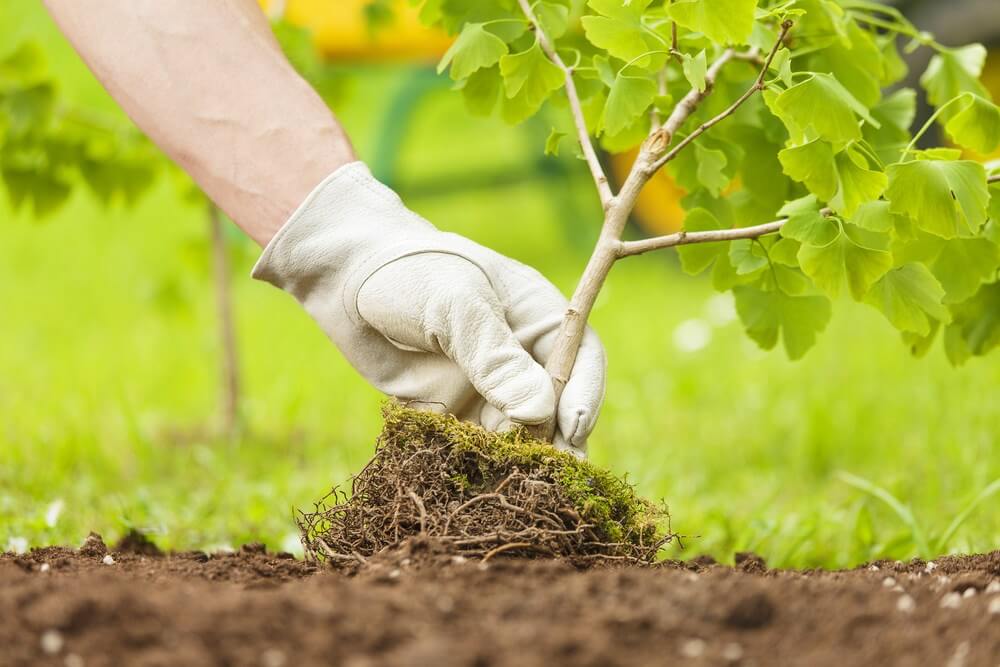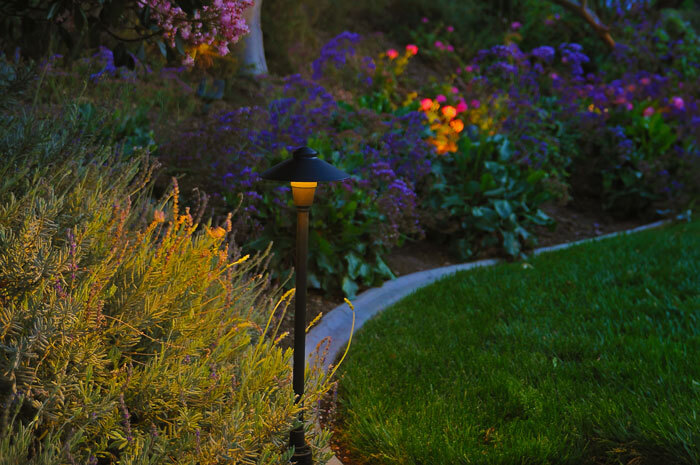
When it comes to trees, how do you balance saving water and keeping trees irrigated and healthy? Understanding the needs your tree will have based on its current life stage is the best place to start.
Watering Newly Planted Trees
When a tree is first planted, most of its roots are still located inside the original root ball. The tree should be watered in a way that encourages the roots to grow outside of the root ball. This way, the roots will become established in the soil. With a newly planted tree, watering the soil under the tree canopy will keep the root ball and its surrounding soil moist enough to boost healthy root growth.
In moderate climates, irrigation experts recommend doing this twice per week. When the weather is hot and dry, increase to three times per week. If a steady rain shower soaks the ground, it can be counted as one day of watering. A rain shower is one of the best ways to save water, while still ensuring the root ball gets the moisture it needs to grow.
Watering Established Trees
The growing season for trees is late spring to early summer. It can take up to two growing seasons for a tree to become established. Once the tree has become established, the recommended watering practices change. The tree will need less frequent watering. You’ll need to adjust the watering technique, as well.
For established trees, water in a circular motion around the dripline. The dripline is the wide band around the outer reaches of the tree’s canopy. Water an established tree several feet around its dripline. This ensures that the roots (which have grown past the dripline at this point) get all the water they need.
When it comes to ways to save water while irrigating established trees, here are three valuable tips:
1.) Soak the entire area under the canopy.
When it comes to watering trees, allowing water to soak deep into the soil near the roots is preferable to spraying the surface. Soaking the soil when watering trees will reduce the frequency of watering applications needed.
2.) Avoid watering the tree trunk.
Too much water on the trunk, or the area directly adjacent to the trunk, can increase the risks of tree rot and disease. Having a drip system installed can keep water deep in the soil where it belongs. It can deliver the preferred soaking method described above, too.
3.) Use technology designed to reduce water waste.
The right irrigation technology can measure soil moisture levels and indicate when watering is needed. For example, the Toro® Precision™ Soil Sensor can assess the moisture levels in any soil and tell the user (via a wireless receiver) when the soil requires watering.
Why Use Soil Sensor Technology?
Utilizing high-tech soil sensor technology like this is one of the best ways to save water while irrigating trees. The alternative to soil moisture testing is tedious; it requires digging, manually testing for moisture levels, and knowing the soil type. These processes increase the risk of human error, which can lead to over- or under-watering.
With the wireless Precision™ Soil Sensor, Toro offers a more accurate method of soil moisture testing that can save up to 30% on annual irrigation water use when used for turfgrass. The sensor is designed to work with nearly all brands of irrigation controllers, including Hunter®, Rain Bird® and Orbit®* – and works by measuring the soil moisture throughout the day. Once the soil is “wet” enough (established during the sensor setup process), it will stop the irrigation system from running, including any scheduled programs. It will continue to prevent any irrigation until the soil dries out, which is a point that you control and can adjust as needed.
Additionally, the sensor is equipped with a freeze detection capability. This prevents the irrigation system from running when freezing conditions are approaching. Freeze detection is not only one of the best ways to save water; it is also one of the best ways to save trees. Tree experts caution against watering trees anytime temperatures drop below 40 degrees Fahrenheit, so avoiding irrigation when freezing conditions are present is important.
Other Tree Watering Technology
Technology that regulates tree watering practices doesn’t end with soil sensors. Another important practice in tree irrigation is preventing water runoff, and there is technology that can help accomplish that. The Toro® EVOLUTION® Series Controller with SmartConnect® is an irrigation controller that allows users to automatically program their watering schedules, including any drip systems that are being used to irrigate trees. Plus, the EVOLUTION controller enhances the capabilities of the Precision™ Soil Sensor by enabling the integration of up to three sensors on the property. That means you could use two for trees and one for the lawn. Or, if desired, you could swap one to instead include a weather sensor to prevent the irrigation system from running during rainfall.
Additionally, it is possible to have multiple schedules in the controller. This gives users the ability water the lawn at whatever frequency they desire, and then water the trees separately three days a week or another preferred schedule.
There are many ways to save water, while still keeping trees irrigated. Use these best practices for watering trees in order to improve the health and longevity of the trees on any residential or commercial property.
*Hunter, Rain Bird, and Orbit are registered trademarks of their respective companies.



